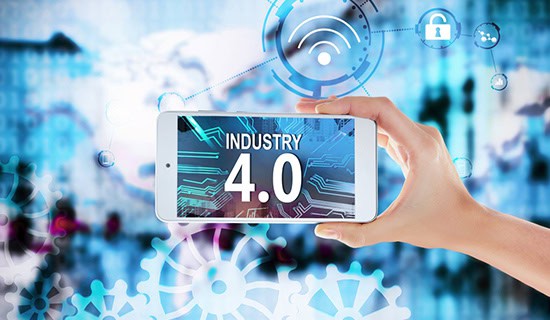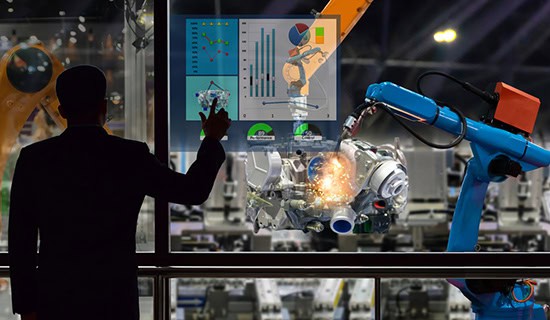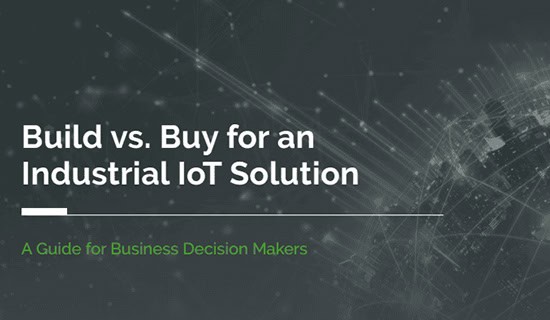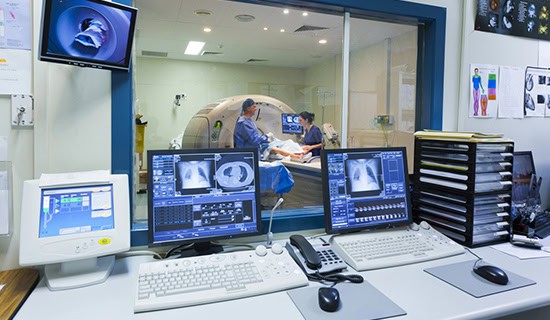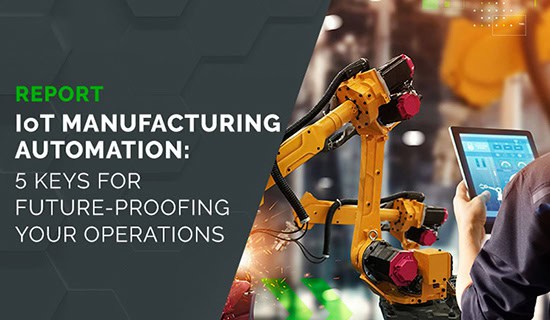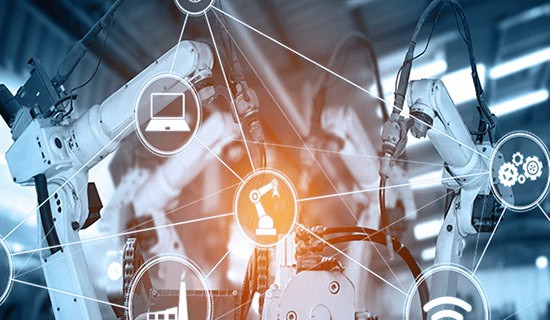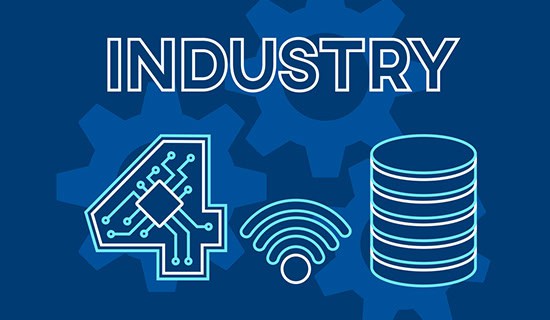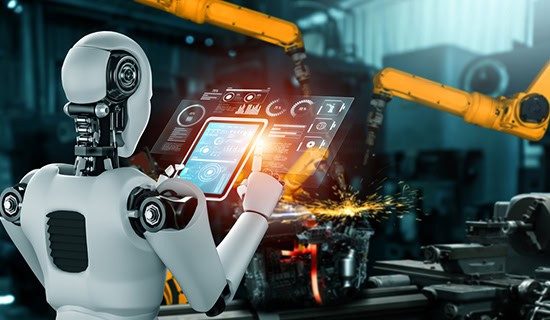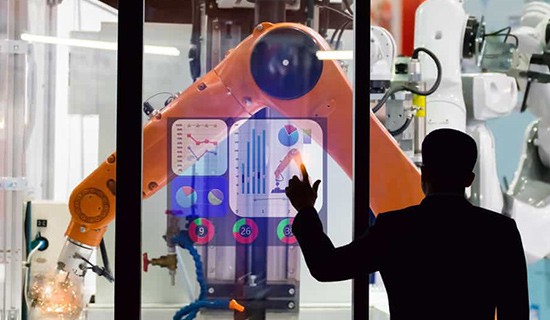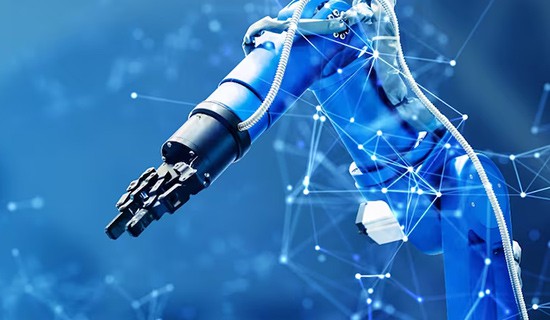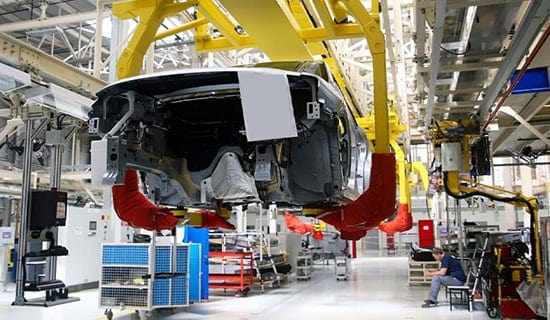Accelerating Manufacturing Digital Transformation with Industrial Connectivity and IoT
Digital transformation is empowering industrial organizations to deliver sustainable innovation, disruption-proof products and services, and continuous operational improvement. Read more

Trending Now
Revealing the Hidden Plant Through IoT
IoT and predictive analytics can help reveal unknown “invisible factory” inefficiencies that once went unnoticed.
Bridging the Connectivity Gap: Overcoming Legacy Infrastructure and Assets in Industrial Digital Transformation
As manufacturers plan their digital transformation strategies for the coming year, investing in robust industrial connectivity solutions will be crucial.
Resources
The Future of IT/OT Integration in Industrial Manufacturing
By embracing IT/OT integration, industrial manufacturers can move toward a future where data-driven decision-making is the norm, positioning themselves as leaders in an ever-evolving marketplace.
Closing the Gap Between SMEs and Industry Giants with Smart Manufacturing
Smart manufacturing helps small and medium enterprises compete with larger rivals by overcoming inherent challenges like limited budgets, smaller orders, and tighter margins.
Top Industrial IoT (IIoT) Trends for Manufacturing in 2025
By strategically investing in IIoT in 2024, manufacturers can transform their operations, improve efficiencies, and achieve long-term growth in an increasingly competitive marketplace.
Accelerating Digital Transformation in Manufacturing with Enterprise Industrial Connectivity
Enterprise industrial connectivity offers a way to address manufacturing digital transformation data integration challenges by enabling seamless communication across disparate systems.
The Human-Centric Advantage of Industry 5.0 in Manufacturing
Discover how Industry 5.0 is transforming manufacturing by blending human creativity with technology for smarter, more sustainable operations.
The Role of Industrial Connectivity in Enabling AI-powered Operations
Industrial connectivity makes data (that has long been locked away) available to power the next generation of industrial transformation.
Moving Beyond Data Collection to Data Orchestration
Learn how real-time insights, edge analytics, and integrated data streams help optimize performance, reduce downtime, and drive smarter decisions, making data orchestration essential for industrial efficiency.
Report: Top IoT Use Cases Deliver Strong ROI
Many of the top IoT use cases are delivering strong ROI for the organizations that are deploying them.
Standardizing Industrial Connectivity with Kepware
With increasing investments in automation, AI, and advanced analytics, legacy architectures are pushed to the limits, while facing heightened cybersecurity risks. Learn how can you overcome these challenges and ensure secure access to your OT data with Kepware.
Data Standards: Boosting Interoperability, Security, and Scale
Hear how CESMII is advancing smart manufacturing – blending human-centered best practices with digital tools and innovative technologies – by addressing OT data complexity in episode 3 of Edge of Industry.
The Evolving Role of IoT Analytics in Industrial Operations
As IoT technology increases, the potential for IoT analytics in industrial operations will only grow, offering even more opportunities for innovation and optimization.
Unlocking OT Data at Scale
This guide explores how industrial connectivity bridges the gap between legacy and modern machines, ensuring seamless data exchange across systems like MES, ERP, and SCADA.
Harnessing the Power of Intelligent Manufacturing Requires Human Expertise
Intelligent manufacturing goes beyond Industry 4.0 to deliver tangible, strategic benefits. The rewards for getting it right are high.
The Post-Pandemic Manufacturing Surge: Leveraging Data for Competitive Advantage
With the widespread availability of democratized data, manufacturers are experiencing a surge in efficiency and productivity.
Connecting with Kepware Customers: Electrolux
Learn how Kepware used industrial connectivity and drove digital transformation for Electrolux.
Connecting with Kepware Customers: Howden
Learn how Howden, a leader in air and gas engineering solutions, worked with PTC to develop a predictive analytics program—producing demonstrable benefits across the value chain.
Synergies of Technology: The Key to Intelligent Manufacturing
The true value of intelligent manufacturing technologies like AI, digital twins, IoT, and more is unlocked when people are empowered to oversee, adapt, and optimize their use.
2024 Global IoT Market: More Smarter Devices
By integrating AI into IoT (a major trend in 2024), industrial environments can become smarter, more efficient, and capable of adapting to the complexities of modern operations.
IT/OT Convergence’s Achilles Heel: OT Security
Ensuring OT security allows for greater confidence when converging IT and OT systems. That, in turn, allows industrial industry organizations to achieve greater efficiency and enables innovation, positioning the companies for long-term success.
IoT Connectivity Demands Drive New Generation of Satellite Services
The combination of lower launch costs and industry efforts to enable global IoT satellite services bodes well for end-user companies that want the flexibility to use IoT devices anywhere.
Improving Throughput Efficiency in Manufacturing: A Comprehensive Strategy
A look at the key elements that go into a strategy to improve manufacturing throughput efficiency. Bottom line: Leveraging advanced technologies such as IoT and industrial connectivity is essential to such efforts.
Secure OT Networks through Industrial Connectivity Before Disaster Strikes
Organizations are woefully unprepared for operational technology (OT) security threats—but most don’t realize it until it’s too late. Here’s what you need to know.
Edge of Industry Podcast
Gain insights into how industrial connectivity accelerates digital transformation, reduces cybersecurity risks, and unlocks operational efficiency.
IT/OT Convergence Needs More Than Technology
While connectivity technology is essential to reap the benefits of IT/OT convergence, success requires collaboration between numerous disciplines and a culture change.
Using Digital Twins to Drive Manufacturing Efficiency
The future of digital twins in intelligent manufacturing is promising and highly dependent on the ability to fuse and analyze data from multiple sources.
New IoT Use Cases Improve Industrial Manufacturing Operational Efficiency
New IoT use cases help industrial manufacturers achieve greater operational efficiency, reduce costs, and enhance overall productivity.
Bridging the OT Data Gap in IoT
Discover the types of technologies you need to develop a connected manufacturing floor in this eBook.
The Lean Manufacturer, Episode 2: Importance of Continuous Improvement in Manufacturing
Learn about the art of continuous improvement in manufacturing, including the importance of shop floor and lean strategies and the significance of changing mindsets and grooming talent.
Build vs. Buy for an Industrial IoT Solution
Manufacturers seeking to scale digital transformation are realizing the need for a timely and cost affective IIoT implementation. Should you build or buy? Read this guide for suggestions on how to choose.
Data Democratization and Quality Key to Industrial Manufacturing Success
Data democratization is revitalizing industrial manufacturing operations, enabling better decision-making, and improving operational efficiency. Learn how making data accessible to all employees can drive significant cost reductions and uncover new revenue streams.
IoT Invigorates the Industrial Medical Device Market
IoT gives medical device manufacturers the ability to reduce their maintenance costs for products in the field and enhance customer service.
IoT Factory Automation: 5 Keys for Future-Proofing your Operations
Discover the five essential strategies for safeguarding the future of your factory operations in this whitepaper.
Webinar: Safeguarding Industrial Operations in the Digital Era
As digitalization advances and ushers in IoT devices, edge solutions, and interconnected workforces, a whole new realm of cyber risks emerges, expanding the attack surface and necessitating heightened vigilance. In this webinar, learn about effective cybersecurity strategies and more.
Why Connectivity is the Key to Manufacturing Digital Transformation
Digital transformation requires secure, reliable, seamless connectivity to all industrial assets, which is a mandatory step in any operational improvement initiative
Enabling IT/OT Convergence and Its Many Benefits
As IoT and enterprise connectivity become more entrenched in manufacturing environments, the vision of IT/OT convergence is becoming a reality.
A Quick Guide to Industry 4.0: Steps to Modernize Operations
The transition to Industry 4.0 is powered by technology that enables smarter, interconnected environments. Data connectivity and IoT platforms are central to these environments.
Enabling IT/OT Convergence and Its Many Benefits
As IoT and enterprise connectivity become more entrenched in manufacturing environments, the vision of IT/OT convergence is becoming a reality.
IIoT Wireless Options Abound, See What’s New
While there are several tried-and-true wireless options that have served the manufacturing industry for years, attention is starting to shift to private cellular, based on 4G LTE and 5G technologies, due to its performance and low latency.
How Industrial Connectivity Enables Manufacturing Automation and Insights
Manufacturers need an industrial connectivity platform that provides a range of features and capabilities for seamless integration and communication within industrial environments.
Leading Bearing Manufacturer NEI Digitally Transforms Factory Operations with IoT
NEI needed a platform that could collect and analyze data from various machines across different vendors and provide a real-time dashboard for live monitoring and decision-making. Learn why it chose PTC’s ThingWorx as an industrial IoT platform.
Steps to Unlocking Lasting Success with Digital Manufacturing Solutions
To become more resilient, companies are turning to a host of new digital solutions that promise to transform their manufacturing operations. This guide provides a strategic framework to help manufacturing leaders make informed digital transformation decisions based on their ability to deliver lower operational costs, increased workforce productivity, and more.
A New Era of Manufacturing Continuous Improvement
This new era of digital transformation demands continuous improvement (CI), and if done correctly, it can help a manufacturing business stay competitive and profitable. But how can manufacturers avoid the trade-offs associated with CI projects and keep employees engaged?
Key Use Cases for Industrial Connectivity in Manufacturing
While many have talked about the possibilities and potential of things like smart factories and Industry 4.0 for years, the realization of many benefits of those loftier visions and strategies is achievable today by leveraging industrial connectivity.
The Evolution of Manufacturing in the IoT Era
In discussing the future of manufacturing with IoT and industrial connectivity, it’s essential to focus on a key element: democratized data. This concept is crucial because it connects all the dots from technology adoption to practical implementation strategies.
IoT Day 2024 Highlights the Importance of AI in Industrial Applications
Many manufacturers are applying sophisticated analytics and AI to their IoT data to monitor operations in real time, improve efficiencies, and make intelligent decisions.
How Industrial Connectivity and IoT Enable Manufacturing Digital Transformation
Learn how to ensure manufacturing digital transformation success by breaking down information silos and securely sharing IoT and other data with the right person at the right time and in the right context.
Manufacturers Find New Applications as IoT Devices Proliferate
With more IoT devices being installed and deployed in manufacturing plants and on production lines all the time, new applications for IoT data (beyond the more well-known use cases) are starting to emerge.
The State of Manufacturing 2024: It’s Digital All the Way
Expanded use of digital technologies like IoT, enterprise connectivity, and analytics is the key to addressing the major challenges manufacturers face in 2024.
Building a Scalable Industrial Transformation Program
Explore proven strategies from industry leaders for a scalable, industrial transformation program in this guide.
Electrolux Turns Connected Data into Transformational Insights
Learn how Electrolux bridged the gap between Operational Technology and Information Technology systems with a standardized, scalable connectivity layer.
Are You Ready for Your Digital Transformation Journey?
The focus of Industry 5.0 will go beyond building products and delivering services. Learn what to expect in this in-depth Frost and Sullivan report.
Start with OEE. But don’t stop there
You rely on OEE percentages to tell you there’s a production issue. But to keep things moving in the right direction, you need Digital Performance Management (DPM). Here’s why.
Enabling Intelligent Manufacturing with Industrial Connectivity
Manufacturing is facing several challenges that can potentially all be addressed by making use of technological advances. Learn about the importance of having a connected solution that facilitates standardized communications between various industrial automation devices and applications in this eBook.
Driving Efficiency at Tofaş with ThingWorx
Learn how Tofaş is leveraging digitalization to achieve operational excellence and sustainability.



















